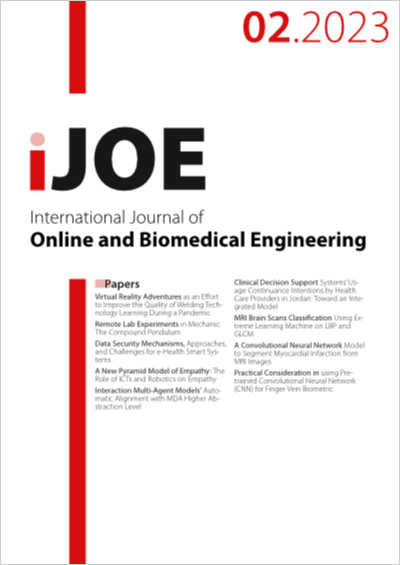Practical Consideration in using Pre-trained Convolutional Neural Network (CNN) for Finger Vein Biometric
DOI:
https://doi.org/10.3991/ijoe.v19i02.35273Keywords:
AlexNet, CLAHE, ROC, Biometric Authentication, Finger VeinAbstract
Using a pre-trained Convolutional Neural Network (CNN) model for a practical biometric authentication system requires specific procedures for training and performance evaluation. There are two criteria for a practical biometric system studied in this paper. First, the system’s ability to handle identity theft or impersonation attacks. Second, the ability of the system to generate high authentication performance with minimal enrollment period. We propose the use of the Multiple Clip Contrast Limited Adaptive Histogram Equalization (MC-CLAHE) technique to process finger images before being trained by CNN. A pre-trained CNN model called AlexNet is used to extract features as well as classify the MC-CLAHE images. The authentication performance of the pre-trained AlexNet model has increased by a maximum of 30% when using this technique. To ensure that the pre-trained AlexNet model is evaluated based on its ability to prevent impersonation attacks, a procedure to generate the Receiver Operating Characteristics (ROC) curve is proposed. An offline procedure for training the pre-trained AlexNet model is also proposed in this paper. The purpose is to minimize the user enrollment period without compromising the authentication performance. In this paper, this procedure successfully reduces the enrollment time by up to 95% compared to using on-line training.
Downloads
Published
How to Cite
Issue
Section
License
Copyright (c) 2023 Sairul Safie, Puteri Zarina Megat Khalid

This work is licensed under a Creative Commons Attribution 4.0 International License.



